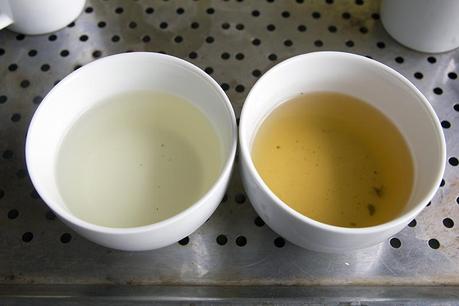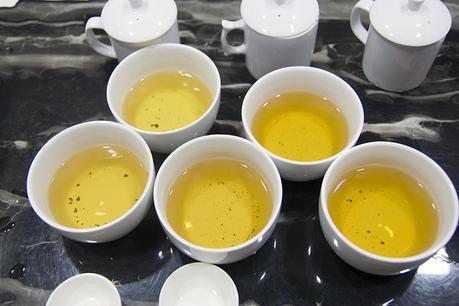In the first part of this series, we looked at the chemical composition of tea and some of the associated health benefits.
Then we looked at classification of tea and how its production method affects the chemical composition.
In the 3rd part we examined how classification of tea alone is insufficient for determining the chemical composition and hence health benefit of tea.
In this next post, we will look at general guidelines at selecting a ‘healthier tea’.
It must be emphasized once again that there is no easy answer and no definitive one, what we try to do is point you in the right direction.
Season for tea
The tea plant hibernates at temperatures of 10⁰C and below- which means during winter, it no longer buds and grows but it continues to absorb nutrients.
Once the plant has accumulated sufficient heat, it will bud and eventually be ripe for picking.
During this entire period, the leaves absorb nutrients.
For summer (and to a lesser extent autumn), the average temperature is higher, the plants bud faster, leaving lesser time to accumulate nutrients.
Hence if you are looking for higher nutritional content, spring teas are a good bet.
Well made
Production standards matter.
Let’s compare these 2 Maofeng that I wrote about earlier.

The level of oxidation varies significantly as you can see from the liquor color.
If you are a traditionalist, there is no way a green tea ‘ought to’ have that level of oxidation as we understand green tea production.
Green tea as we understand undergoes shaqing right from the onset to preserve the minimal oxidation level. Casual treatment- withering under to sun- or poor shaqing techniques resulting in uneven destruction of the polyphenol oxidase enzyme are among contributing factors to the oxidation.
Judge a tea by its packaging- at least partially
After the tea is made, the story doesn’t end there.
Polyphenols, particularly from the Catechins family continue to be oxidized. Light, heat and moisture also cause chemical reactions.
Hence don’t just look for a pretty wrapper- look for one that is opaque and provides protection against air and moisture and strong enough to undergo normal wear and tear during shipping.
For example, most supermarket grade teas are packed in a paper box and wrapped in a flimsy film. Packaging can be quite attractive but it provides little protection against oxygen (and moisture).
Even worse are packaging that have a transparent or translucent window that displays the tea. High on aesthetics but exposes the tea unnecessarily to light. Glass jars are pretty much the same.
Metal or the more economical option of aluminum lined bags provides much better protection.
Taste the difference
Often people ask- “do you drink for taste or for health”.
In truth, there doesn’t need to be any conflict.
The taste characteristics of tea are dependent on its chemical content.
Amino acid which is associated with relaxation and reduction of blood pressure (among others) is also responsible for the brisk and sweetness in the tea.
Tea polysaccharides which are linked to controlling diabetics gives tea its sweetness as well.
While polyphenols are causes astringency, it also gives the tea its body and fullness. By balancing the amino acid and polyphenol content, a delightful combination can be produced, which is the goal of good producers.
In other words, even if you are drinking primarily for health benefits, there is absolutely no reason why it should taste horrid.
Much of this perception was probably birthed because of the low quality green teas and non-authentic white teas that flood the market, riding on the claims of health benefit.
Choose something you like
There are 2 reasons for doing so.

First, many of the research on the health benefits of tea are either based on laboratory scenarios- i.e. unnaturally high ‘dosage’- or sustained periods of consumption.
Presumably the reader has the good sense not to ask why it is not viable to inject 10 mg of green tea into the bloodstream for example we are left with consumption over a sustained period.
If you dislike a drink, it is highly unlikely that you will drink 3-5 cups daily on a regular basis, which is how subjects were tested in this research.
Secondly, there is much research that needs to be done.
For instance, typically we associate stroke prevention with green tea until research showed that regular consumption of black tea was effective as well.
If you were a black tea lover who subsisted on green tea begrudgingly, it must be disheartening.
On the other hand, it bears mentioning that black tea- by virtue of the fact that it is the most consumed outside of the far east- and green tea- because much of the early green tea research stemmed from Japan which predominantly consumes green tea- you would expect these 2 to dominate the research headlines.
White, oolong and dark tea slowly got some press as well but research on yellow tea is few and far between- likely due to its relative lesser volume- not to mention it is very expensive to conduct tests based on Junshan Yinzhen!- doesn’t turn up much in research journals.
While chemical composition may differ, much of our present research methodology of conducting in vitro experiments may take a long time to uncover the full picture.
Drink something you like, so long as it is well made, well stored, tasty and preferably from the spring harvest it will do you some good.
If nothing else, it is a gourmet treat that do not pile on the calories, not many beverages can say the same!
See here for other frequently asked tea related questions
See here for more articles related to tea and health
